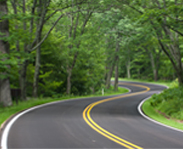Motorcycle Repainting Tips, Yum… Candy!
Paint just not looking like it used to? Is it scratched, cracked and faded? There is only one way to go. Time for a repaint! Motorcycle paint goes every which way. Airbrushing and satin paint seemed to be the fad. This article is going to take a vintage approach to a paint job. The idea was to create a tantalizing color with the effects of a visual starburst. For the best colors, candies over metallic bases usually give a great pop. The metallic and pearl from the base coat glimmer through the translucent candy coat. For visual appeal, it can’t get much better. How to even start? Well, preparation is always the most important factor. For this example, the frame was black so only the gas tanks and fenders were repainted. If using the old tins, the old paint must either be removed or sanded smooth. Abrasive sponge disks work very well to bring tins to bare metal. If any edge can be felt, it needs to be sanded more. 80 grit can be used to cut the paint. Finer grits like 120, 150 and 220 can be used to achieve final smoothness. Limit the amount of sanding scratches with finer sandpaper. Body filler can be used on any low spots. A temporary paint booth can be created using tarps and drop clothes. Try to limit the amount of dust kicked up. The floor can be wet to keep the dust down and an exhaust fan can suck the fumes and dust out. Create some kind of stable stand to hold the pieces in place. A wire or rope can be used to hang the items. Remember to wear a respirator because fumes from modern paints can be very hazardous.
A good epoxy primer should be used after bodywork has been done. First a surfacer ratio is used. This means the primer is less thinned, so it can work as a filler primer. This will fill out any little imperfections. Wipe the surface of the metal with a wax and oil remover. With a properly loaded sprayer, shoot the primer as recommended by the manufacturer’s technical sheets. The primer is then block sanded with 220/320 grit sand paper to give the final touches on body work. The surface is again wiped with a cleaning agent. A sealer primer ratio is now used. The primer is thinned and used to give a more uniform color coverage. After the primer dries it needs to be wet sanded. A water and soap combo seems to yield the best results with a fine grit sand paper. First use 400 grit and work to a 600 grit paper. The primer should be as smooth as a baby’s bottom.
This site and articles contained herein are provided for general informational purposes only and are not a substitute or intended as professional advice. Please be sure to refer to your owner’s manual or consult a mechanic for information specific to your motorcycle. The information contained on this site and articles contained herein are provided on an “as is” basis with no guarantees of completeness, accuracy, usefulness or timeliness and without any warranties of any kind whatsoever, express or implied. Rider Insurance Company, Rider Insurance Agency, Inc. and its affiliates (together, “Rider”) assume no responsibility for any errors or omissions in the content of this site and articles contained herein. Any action taken upon this information is strictly at your own risk and Rider will not be liable for any losses or damages in connection with your use of this site and articles. Additional terms and conditions apply and are available at https://model.rider.com/plymouth-rock-assurance-general-terms-and-conditions/.

Wipe the surfaces again. It is now time for the base coat. Candies work the best with silver, gold or copper bases. Silver urethane basecoat was used in this example. It contains metallics and pearls. After it is sprayed it has a satin luster. Depending on the type of paint, it might need to be sealed with an intercoat clear before graphics are laid down. To create an insert, the center of the tanks and fenders were exposed with the rest masked off. A fine 1/8th plastic masking tape works great for hard curves. Paper tape would rip with this kind of stress. The center of the tank was then airbrushed with a graphic. In this case, a base coat urethane black was used. The pattern was created using measurements and the edge of a paper.
To create a two-tone effect, candy was not sprayed over the inserts. After the paint dried for a night, the inserts were then masked. A small line bordered the insert to act as a pinstripe. All different designs can be masked out. The candy is then applied. Candy is a translucent urethane covering. It comes in a concentrate which looks like liquid jolly rancher. It can either tint clear coat or just be sprayed over the base coat.
The trick with candy is that the number of coats affects the darkness of the color. Count each coat that is laid so that all parts have the same number of coats. Many thin coats seem to work best with a flash time between the coats. Flash is the amount of time it takes for the paint to become tacky.
The insert can then be un-masked. The whole piece is then clear coated. Make sure to put a good amount of clear coat on. Thin layers again should be sprayed, with flash time in-between each layer. The piece should look very glossy and have a deep luster. Let the paint cure for a week. The clear coat can then be wet sanded to remove any orange peel and imperfections in the clear coat. Orange peel is the uneven surface of clear coat that has an orange peel like texture. Grits from 1000 to 2000 can be used depending on the amount of orange peel. Once the paint is smooth, polishing compounds are used. A course compound will removed any swirls and imperfections. A fine compound will bring the shine up. After a month the paint can be waxed and sealed. The final result will win awards!
Plymouth Rock Assurance is a marketing name used by a group of separate companies that write and manage property and casualty insurance in multiple states. Motorcycle insurance in New Jersey and Pennsylvania is underwritten by Rider Insurance Company. Each company is financially responsible only for its own insurance products. Actual coverage is subject to the language of the policies as issued by each separate company.





